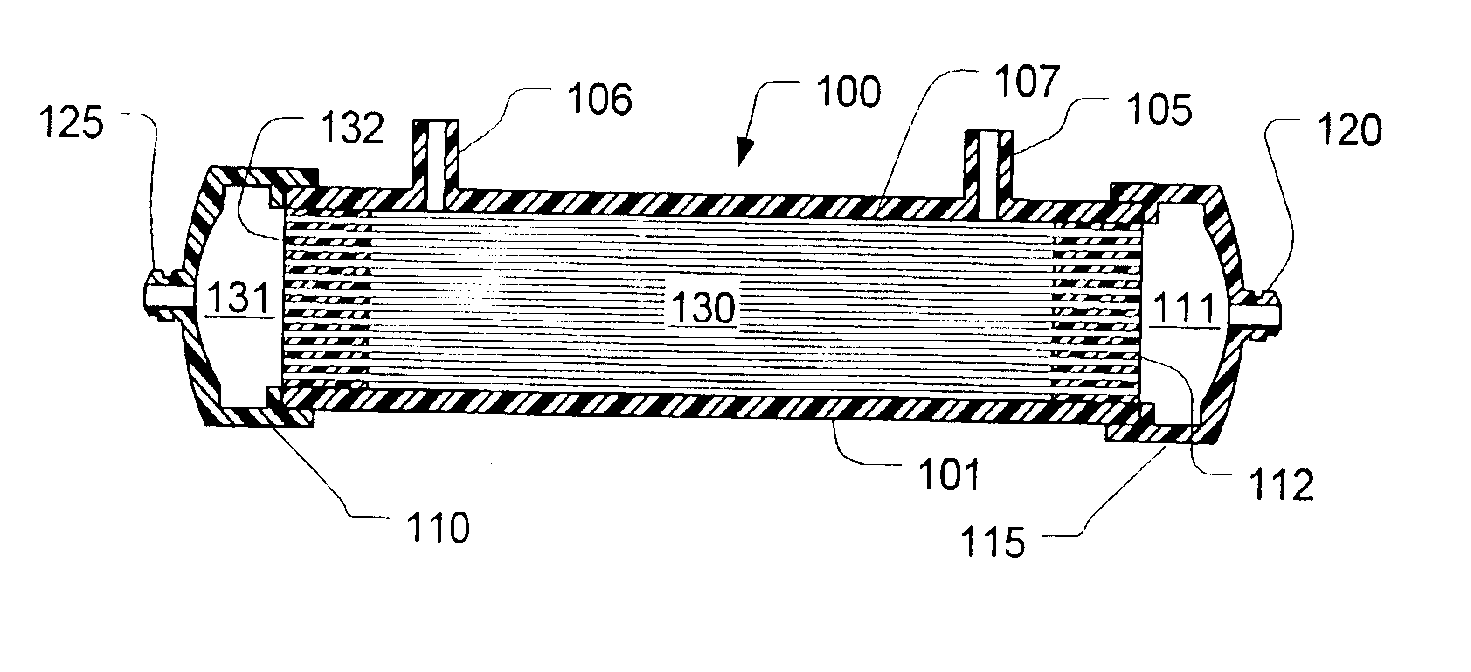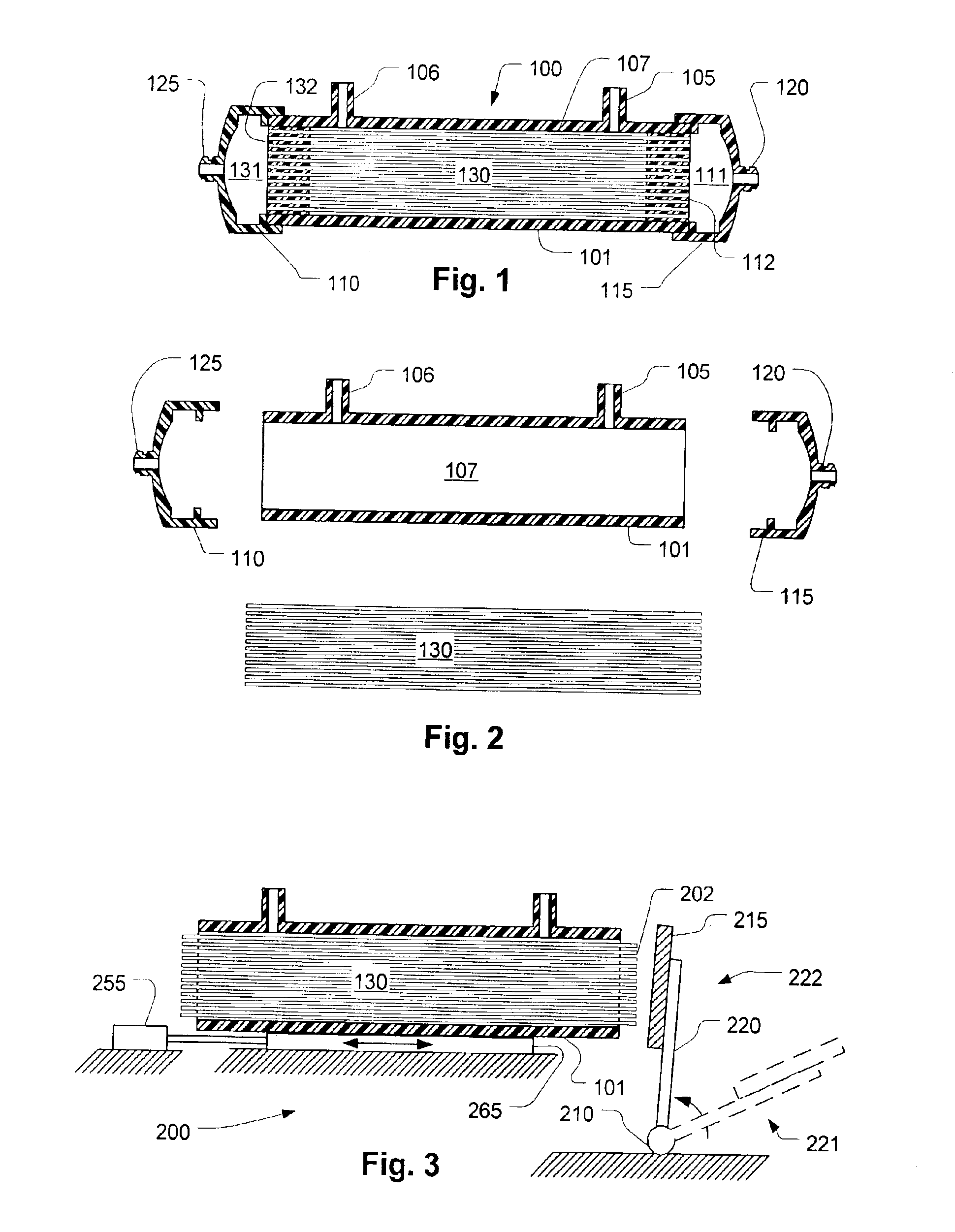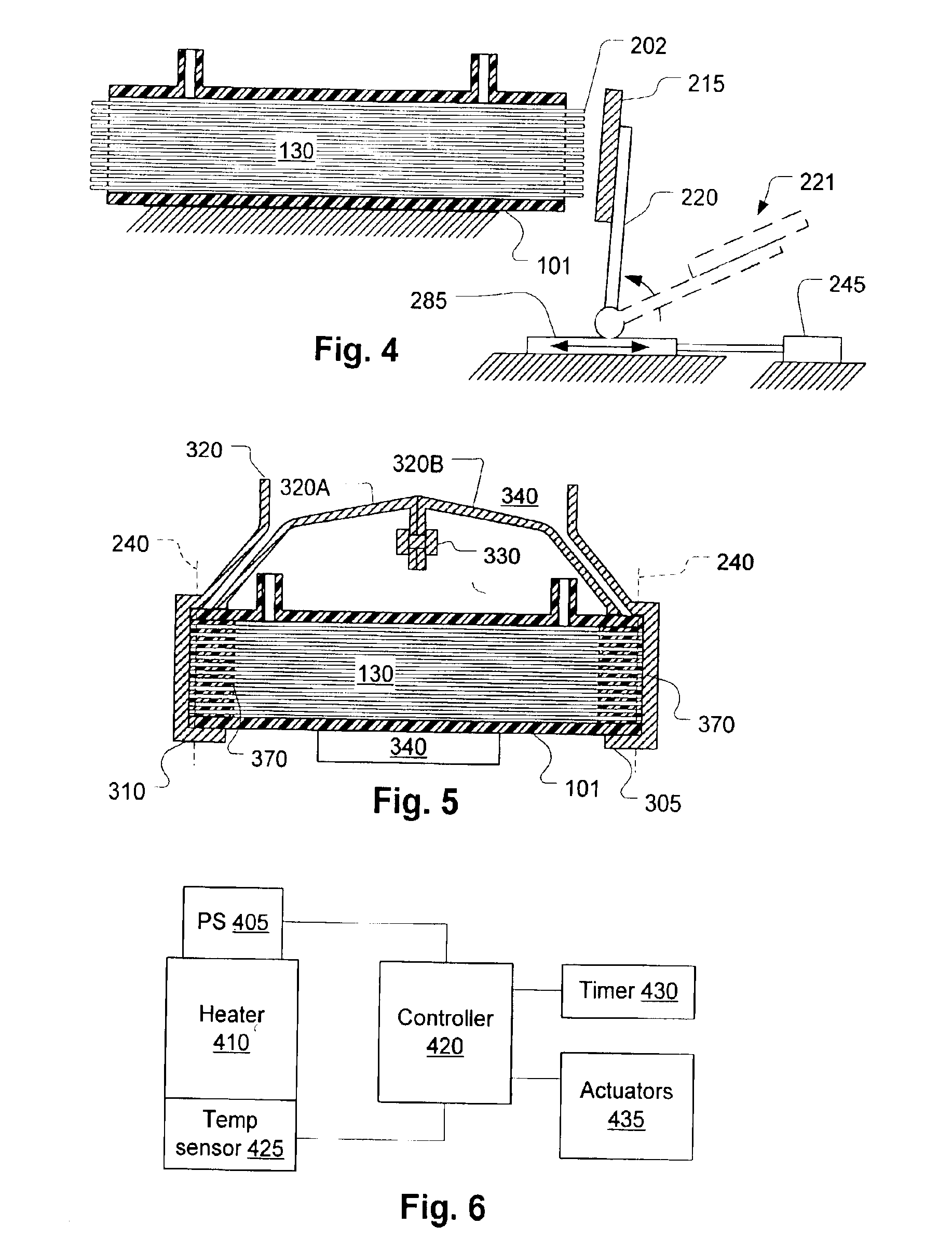Method and apparatus for manufacturing filters
a filter and filter material technology, applied in the field of devices and methods making filters, can solve the problems of difficult control, potting material, and fiber material burning, and achieve the effect of shortening the amount of time that fibers need to be exposed to the heater
- Summary
- Abstract
- Description
- Claims
- Application Information
AI Technical Summary
Benefits of technology
Problems solved by technology
Method used
Image
Examples
Embodiment Construction
Referring now to FIG. 1, a filter 100 has a housing 101 that is generally cylindrical in shape with one or more filtrate ports 105 and 106. In a dialysis application, these filtrate ports 105 and 106 would be connected respectively to a source and drain for dialysate. A bundle of fibers 130 rests within the housing. Each fiber is cylindrical in shape with its interior in communication with header spaces 131 and 111 at respective ends thereof. Respective plugs of potting material 132 and 112 form headers that prevent fluid in the header spaces 131 and 111 from flowing into the internal volume 107 between the fibers which communicates with the filtrate ports 105 and 106. Blood ports 120 and 125 provide access to the header spaces 131 and 111.
FIG. 2 shows an exploded diagram of the components used for making the filter. The filter tube bundle 130 is inserted loosely into the filter housing 101. Later, end caps 110 and 115 are attached, usually by well-known bonding techniques. The filt...
PUM
| Property | Measurement | Unit |
|---|---|---|
| Temperature | aaaaa | aaaaa |
| Time | aaaaa | aaaaa |
| Power | aaaaa | aaaaa |
Abstract
Description
Claims
Application Information
 Login to View More
Login to View More - R&D
- Intellectual Property
- Life Sciences
- Materials
- Tech Scout
- Unparalleled Data Quality
- Higher Quality Content
- 60% Fewer Hallucinations
Browse by: Latest US Patents, China's latest patents, Technical Efficacy Thesaurus, Application Domain, Technology Topic, Popular Technical Reports.
© 2025 PatSnap. All rights reserved.Legal|Privacy policy|Modern Slavery Act Transparency Statement|Sitemap|About US| Contact US: help@patsnap.com



